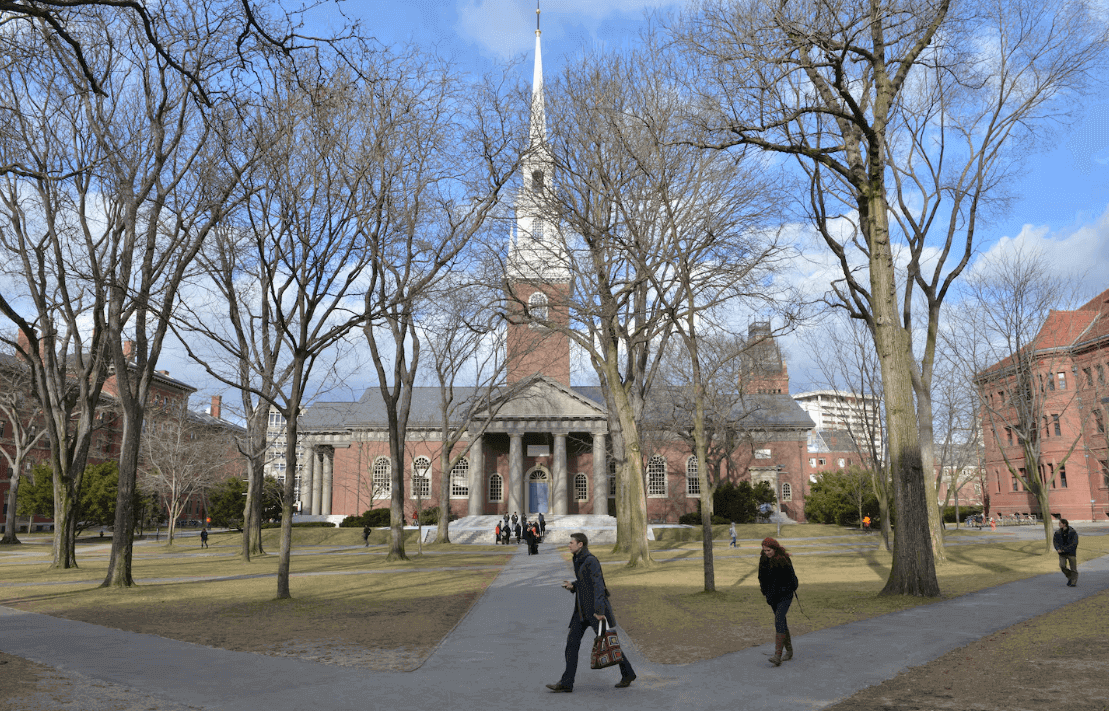哈佛捐赠基金在动荡的学年中增长 投资组合增长 9.6%

【中美创新时报2024 年 10 月 18 日编译讯】(记者温友平编译)哈佛大学报告了其最近一个财年的喜忧参半的财务业绩,其中其巨额捐赠基金反弹并取得强劲回报,而在校园极度动荡的时期,学校的捐款有所下降。《波士顿环球报》记者希拉里·伯恩斯(Hilary Burns )对此作了下述报道。
在校园因以色列-哈马斯战争而出现严重分裂的动荡时期之后,财务指标已成为哈佛立场的试金石,这场战争引发了抗议、政客和知名校友及捐助者的持续批评以及反犹太主义和反穆斯林情绪上升的报道。
根据哈佛大学周四发布的截至 6 月 30 日的年度报告,这所常春藤盟校的私募股权、对冲基金、房地产和其他投资组合在截至 6 月 30 日的财年增长了 9.6%,超过了哈佛 8% 的长期回报目标。一年前,该投资组合增长了 2.9%。
然而,该校还表示,2024 财年的捐款减少了约 15%,至约 12 亿美元;这笔钱的一部分——大学可以立即使用的礼物——增长了 9%,达到 5.28 亿美元。
此外,由于支出增长速度高于收入,该校在本财年结束时的营业盈余远低于上一期。
一方面,捐赠基金的强劲表现高于许多其他大学基金在同一时期报告的表现,这可以反驳那些认为该校已经失去财务敏锐度的批评者。但另一方面,捐款减少表明学校的发展方向仍未得到重视,而不断上升的开支可能会激起批评者对哈佛管理不善的指责。
学校的财务状况可能需要管理人员投入大量时间和精力,尤其是当两位富有的校友分别发起变革运动时,他们认为学校官僚机构臃肿、激进主义泛滥、缺乏多元化观点。
哈佛校长艾伦·加伯在周四的一份声明中承认了最近捐赠者的担忧,并表示该校“有能力继续提高教学和研究水平”。
“随着大学解决过去一年事件中凸显的长期挑战,校友和其他人通过一年来不断增加的支持水平,表达了他们对学校未来的关心和关怀,”加伯说。 “他们对哈佛大学在教学、学习和研究方面追求卓越的核心使命的承诺是我们学校最大的优势之一,并将继续推动发现和创新,其影响远远超出了我们校园的界限。”
8 月,该大学宣布,在前任校长克劳丁·盖伊 (Claudine Gay) 因学术工作涉嫌抄袭以及她处理校园反犹太主义的方式受到批评而突然离职后,加伯将临时接任校长三年。自那以后,加伯一直致力于平息校园紧张局势,走遍全球与校友和捐赠者会面,并在剑桥与相关附属机构举行会议。
哈佛大学 2024 财年的营业盈余为 4500 万美元,低于一年前的 1.855 亿美元。收入增长 6%,即 3.75 亿美元,但支出增长 9%,即 5.15 亿美元,主要是由于加薪和雇用更多员工。
在报告中,哈佛领导层指出,“全国各地的研究型大学都面临着类似的挑战,劳动力成本上升、运营费用增加,监管和监督要求带来的负担也越来越重。”
这是支出连续第二年超过收入,这“不是一条长期可持续的道路”,哈佛首席财务官里图·卡尔拉 (Ritu Kalra) 告诉《哈佛公报》。
“我们最近的支出速度凸显了未来需要谨慎行事,”卡尔拉说。“虽然这在短期内是有目的的,但如果长期收入没有相应的增长,这种做法将是不可持续的。”
哈佛拒绝让卡尔拉接受采访。
捐赠基金占哈佛总收入的 37%,这一比例高于一些同行。学费、住宿和伙食费在 2024 财年产生了 21% 的收入。
Narvekar 说,他的团队在他刚加入公司时审查了大学的风险承受能力,并在 2021 年“批准适度增加投资组合风险”,自那以后“提高了回报”。他补充说,他的团队仍在与大学领导层进行对话,“以确定未来是否有必要提高风险承受能力。”
哈佛的大部分捐赠基金都投资于私募股权和对冲基金;自然资源占该基金分配的不到 1%。
信用评级机构标准普尔今年早些时候将哈佛的最高债券评级定为“AAA”,指出其“卓越的财务资源”、“对学术项目的强劲需求”和“非常强大的筹款能力”。
题图:哈佛确实表示,2024 财年的捐款下降了约 15%,降至约 12 亿美元。Josh Reynolds
附原英文报道:
Harvard endowment grows during turbulent academic year
Portfolio of investments gained 9.6 percent
By Hilary Burns Globe Staff,Updated October 17, 2024
Harvard did say that said donations declined by some 15 percent in fiscal 2024 to about $1.2 billion.Josh Reynolds
Harvard University reported mixed financial results for its most recent fiscal year, in which its massive endowment rebounded to post strong returns, while donations to the school were down during a period of extreme turbulence on campus.
The financial metrics have become something of a litmus test on where Harvard stands after a tumultuous period of sharp division on campus over the Israel-Hamas war, which triggered protests, sustained criticism from politicians and prominent alumni and donors, and reports of rising antisemitism and anti-Muslim sentiment.
The Ivy League school’s portfolio of private equity, hedge funds, real estate, and other investments gained 9.6 percent in the fiscal year that ended June 30, surpassing Harvard’s long-term return target of 8 percent, according to its annual report for the year that ended June 30 that the university released Thursday. A year ago, the portfolio gained 2.9 percent.
However, the school also said donations declined by some 15 percent in fiscal 2024 to about $1.2 billion; a subset of that money — gifts that can be used by the university immediately — grew by 9 percent, to $528 million.
Moreover, the school ended the fiscal year with a much smaller operating surplus than the prior period, as expenses rose at a higher rate than revenues.
On the one hand, the strong performance of the endowment, which was above what many other college funds reported for that period, could rebut critics who contend the school has lost its financial acumen. But on the other, the decline in donations suggests continuing reticence over where the school is headed, while rising expenses could fuel critics who assert Harvard is poorly run.
The school’s financial health is likely to demand much of administrators’ time and attention moving forward, particularly as two wealthy alumuni mount separate campaigns for changes, arguing it has a bloated bureaucracy, is riven by activism, and lacks a diversity of viewpoints.
Harvard president Alan Garber acknowledged recent donor concerns in a statement Thursday, and said the university is “well-positioned to continue to advance its excellence in teaching and research.”
“As the university addressed longstanding challenges that were highlighted by the events of the past year, alumni and others demonstrated both their concern and their care for the future of the institution through growing levels of support over the course of the year,” Garber said. “Their commitment to Harvard’s core mission of excellence in teaching, learning, and research is among the greatest strengths of our institution and will continue to enable discovery and innovation whose impact reaches well beyond the boundaries of our campus.”
The university announced in August that Garber would stay on as president for three years after taking the helm on an interim basis after the abrupt departure of former president Claudine Gay following allegations of plagiarism in her academic work and criticism of her handling of campus antisemitism. Since then, Garber has worked to calm campus tensions, traveling the globe to meet with alumni and donors, and holding sessions with concerned affiliates in Cambridge.
Harvard ended fiscal 2024 with an operating surplus of $45 million, down from $185.5 million a year ago. Revenue rose 6 percent, or $375 million, but expenses rose 9 percent, or $515 million, largely due to salary increases and hiring more people.
In the report, Harvard leaders noted “research universities across the country face similar challenges, with rising labor costs, increased operational expenses, and heavier burdens from regulatory and oversight demands.”
This marks the second consecutive year of expenses outpacing revenue, which is “not a long-run sustainable path,” Ritu Kalra, Harvard’s chief financial officer, told the Harvard Gazette.
The “pace of our recent spending underscores the need for prudence going forward,” Kalra said. “While it has been purposeful in the short term, it won’t be sustainable without a commensurate growth in revenue over the long term.”
Harvard declined to make Kalra available for an interview.
The endowment provided 37 percent of Harvard’s total revenue, a higher proportion than some peers. Tuition, room, and board generated 21 percent of revenue in fiscal 2024.
Narvekar said his team reviewed the university’s risk tolerance when he first joined the company, and in 2021 a “moderate increase in portfolio risk was approved,” which has “bolstered returns” since then. He added his team remains in conversations with university leadership “to determine if future increases to risk tolerance are warranted.”
Much of Harvard’s endowment is invested in private equity and hedge funds; natural resources represent less than 1 percent of the fund’s allocation.
The credit rating agency S&P earlier this year assigned Harvard its highest bond rating of “AAA,”, noting its “exceptional financial resources,” “robust demand for academic programs,” and “very strong fundraising ability.”



